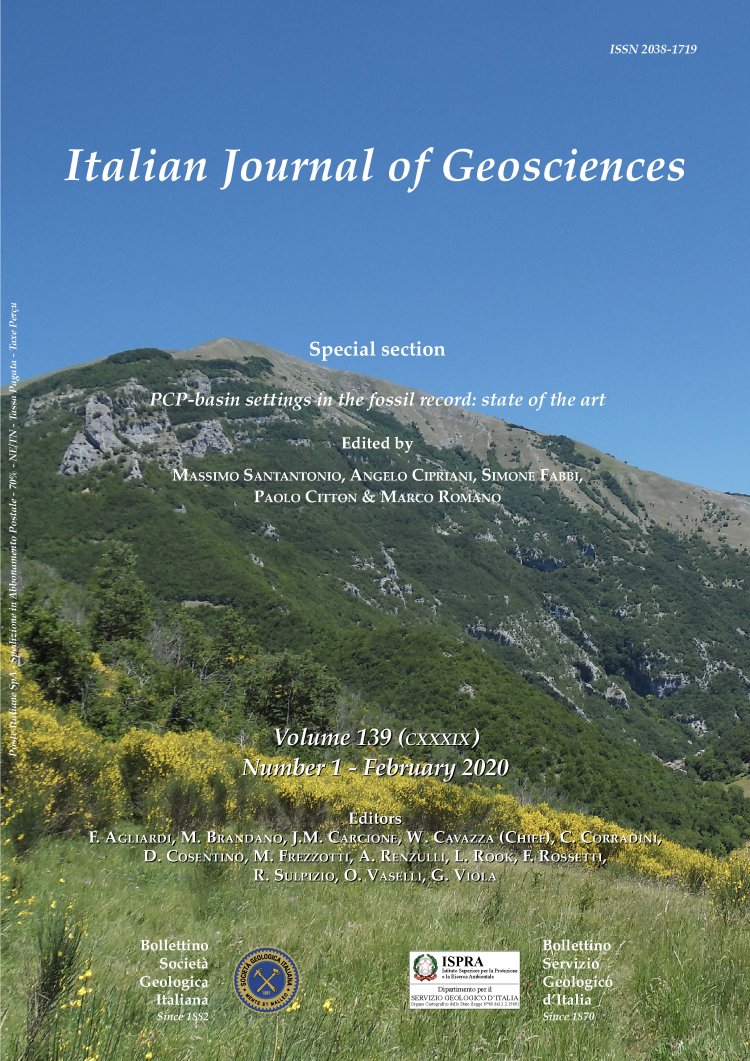
Non-condensed shell beds in hiatal successions: instantaneous cementation associated with nutrient-rich bottom currents and high bivalve production
Adam Tomašových (1), Ján Schlögl (2), Jozef Michalík (1) & Lenka Donovalová (2)
1) Earth Science Institute, Slovak Academy of Sciences, Dúbravská cesta 9, 84005, Bratislava, Slovakia.
(2) Department of Geology and Paleontology, Comenius University, Mlynska dolina G, 84215, Bratislava, Slovakia.
Corresponding author e-mail: geoltoma@savba.sk
Volume: 139 (2020) f.1
Pages: 76-97
Abstract
Pelagic carbonate deposits formed by the thin-shelled, epifaunal, originally bimineralic bivalve Bositra buchi were geographically widely distributed in the Tethyan basins during the Middle Jurassic. Here, to evaluate conditions that allowed the formation of peculiar, metre-scale, densely-packed shell beds primarily formed by Bositra, we assess size distributions and preservation of this bivalve in thin sections at ten sites in the Pieniny Klippen Belt and Peri-Klippen units (Western Carpathians), representing a bathymetric transect from pelagic-platform tops with shell beds up to slope environments where small filaments occur with spicules and radiolarians. Although Bositra shell beds are modulated by transport and winnowing, three types of evidence indicate that they primarily reflect high bivalve productivity. First, we find that size distributions of this species form a bathymetric gradient, from the dominance of remains smaller than 0.5 mm in low- energy slope environments, to 0.5-2 mm on muddy platform edges, up to lensoid shell beds with large valves (~2-15 mm) occurring on platform tops exposed to bottom currents. Although sediment winnowing from shell beds contributed to the rarity of small-sized specimens in platform-top environments, the bathymetric shift in the shape of size distributions is not purely driven by fragmentation and by size-selective transport of small specimens into slope environments because the average valve thickness declines with depth and thick fragments do not occur in slope environments. High abundances of suspension-feeding Bositra preferentially associated with indicators of bottom currents at oligophotic or aphotic depths indicate that plankton productivity was probably sourced by nutrient-rich internal waves that intersected platform tops, leading to low juvenile mortality in Bositra populations. In contrast, populations in deeper environments with the limited input of particulate organic matter failed to achieve maturity. Second, the inner, originally nacreous shell layer of Bositra is now represented by neomorphic calcite that is luminescent, enriched in Mn and depleted in Mg, indicating that this layer was not dissolved in the taphonomic active zone. Third, fibrous- acicular low-Mg calcite cements that characteristically coat Bositra in shell beds show blotchy luminescence and highly irregular Mg distribution, indicating that they were precipitated as high-Mg calcite cements. Fibrous-acicular cements in shell beds do not coat upward- facing sides of valves covered by a first phase of micrite whereas they fully coat elevated portions of the same valves. Therefore, they were precipitated at very high rates concurrently with micrite deposition in shelters. Nutrient-rich bottom currents thus simultaneously increased (1) Bositra survivorship by enhancing primary productivity and (2) cementation rate by renewal of saturation of pore waters in the taphonomic active zone at platform tops. In spite of the association of Bositra shell beds with major hiatal surfaces, (1) the rapid precipitation of fibrous-acicular cements, (2) the rarity of iron-stained Bositra valves in shell beds, and (3) the significantly smaller concentrations of iron in shell-rich muds than in shell-poor muds indicate that shell beds do not represent long-term hiatal or lag concentrations. They rather represent composite shell beds that record high population densities of these bivalves at ecological time scales. Spatial variation in intensity of bottom currents and in sea- floor topography generated by faulted blocks resulted (1) in hiatal surfaces with mineralized hardgrounds at high-energy current-swept sites and (2) in preservation of up to 1 m-thick lensoid shell beds at sites with less intense but persistent currents. Bositra shell beds thus ultimately have patchy horizontal and stratigraphic distribution.
Keywords
Get Full Text Supplementary Material